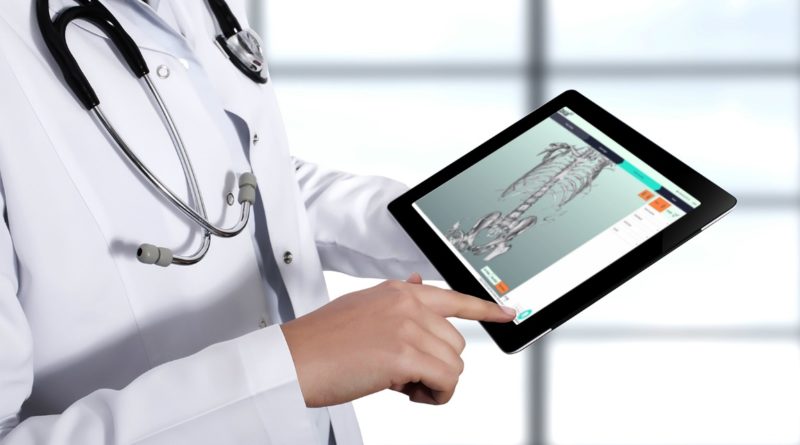How is CAD Modeling useful for the Medical Industry?
3D CAD models and designs have made tremendous advancements and crossed over to a wide array of industries such as gaming, architecture, advertising and media, medical and health services, geology and science, archaeology and so on. 3D Modeling services are no longer restricted to the manufacturing and design industry. In this blog, we will focus on the application of 3D CAD models and designs in the medical industry.
Computer Aided Designs or CAD tools are extensively being used towards bringing about advancements and new developments in the medical and the healthcare industry. Using some of the latest and most advanced CAD tools, researchers can model and recreate the microscopic biological and tissue phenomena to pinpoint accuracy to multiple biological and medical applications.
Using 3D CAD models, tools and designs, we can replicate the underlying properties of the various biological phenomenon in a completely immersive and virtual reality experience.

Here are breakthroughs CAD Modeling has made in the medical industry:
- Create Models from Medical Imaging
With the aid of medical 3D Modeling services, it has become possible to create 3D CAD models from data acquired from medical imaging techniques such as Magnetic Resonance Imaging (MRI) and Computed Tomography (CT) scans.
Usage of such 3D CAD models has become increasingly popular for pre-planned surgeries, especially during implanting some form of medical equipment or prosthetic into the bones, interfacing tissues or any vital organs.
As every patient has unique and complex anatomy which can be modelled in a 3D CAD environment using actual and real-time data from medical imaging techniques. This allows usage of 3D CAD models for designing prosthetics and digitally practice and perform surgery. This way, doctors can ensure that the prosthetic fit the patient perfectly and surgeons can determine risky situations before surgery.
- Organ and Tissue Simulation
3D CAD models can also be useful for medical students to learn and practice surgery in the digitally created virtual reality environment. CAD tools are used to simulate and model the human anatomy.
This use of the 3D scanning services and techniques to 3D models to offer an accessible and interactive method of training for medical students, doctors and surgeons. The collaboration of medical, research and technological companies has resulted in creation and development of realistic models, simulation of the tissue system and human organs which are useful to train the doctors and surgeons of the future.
- Designing Prosthetic Limbs
Prosthetics and artificial limbs offer a chance for amputees to live a normal life. Prosthetics technology has grown leaps and bounds, but one issue the prosthetics makers often face is perfect fitment and alignment of prosthetic limbs to the wearer.
Using 3D scanning services, prosthetic makers can custom-design and manufacture prosthetic limbs to ensure perfect fitting and alignment with the body, anatomy and existing deformity. Every amputee has a different body structure and different prosthetic needs based on their injury, the extent of amputation etc.
These prosthetics also offer faster recovery and rehabilitation, and the user gets used to using these prosthetics in almost no time.
- Drug Design
The application of 3D Modeling services and CAD design is different within the pharmaceutical industry compared to its medicinal applications. Nonetheless, computer-aided designing of the next generation drugs involve dealing in complex computational and compositional modeling of the molecular dynamics of pharmaceutical drugs. This aids in understanding how different components of a pharmaceutical drug will interact with the biochemical anatomy of the human body on a molecular level.
This form of simulation is vital to designing a robust delivery system to enable the medicine to be delivered in the manner and location which is delivering the maximum effect and results. These delivery systems play a vital role in reducing the potential side effects of medications and also can lower the dose requirement.

The Verdict
We are living in the golden era of 3D CAD Modeling in the fields of medicine, healthcare and biological sciences. The role of 3D CAD drafter on contract is no longer limited to the engineering design and manufacture sector.
With increasing capabilities in 3D CAD designs and modeling, we might also witness the 3D printing of human tissue, blood and organs which can revolutionise the organ transplant industry which is plagued with long waiting periods, complicated organ donor systems etc. CAD design and systems are revolutionising the medical and healthcare sector, and this is only the tip of the iceberg.
Author Bio: Kiran Hurkadli is the director of Zeal CAD. He has been offering CAD drafting Service in Australia for years. He has earned success in the CAD drafting industry for his unique and custom designs for his clients.

